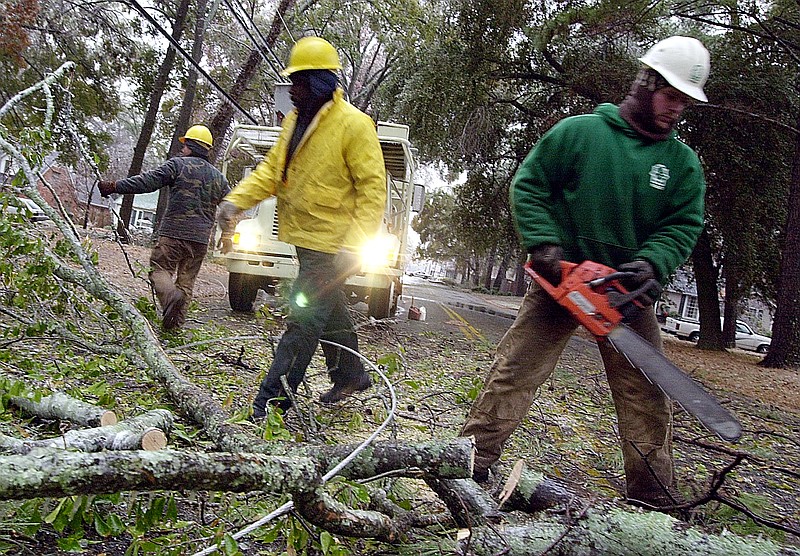TEXARKANA - The ice storm that struck Texarkana on Christmas Day 2000 has left a lasting impression on people in the area, especially on those whose jobs required them to step up and work during the dark and difficult time.
After 20 years, it's still a very vivid memory for those who experienced it.
The devastating freezing rain and ice storm event struck Northeast Texas, Southwest Arkansas, and Southeast Oklahoma on December 25 and early December 26, 2000. The storm caused widespread power outage. At one point, much of the city of Texarkana - about 40,000 people - were without power, telephone, and water.
Wayne Whitaker, CEO of Southwest Arkansas Electric Cooperative, has been with the cooperative 35 years and had never worked anything like the Christmas ice storm.
"I still have scars from it," he laughed. "That was 20 years ago but seems like last week. We had been watching the forecast and knew there was a chance of ice, but not how bad it was going to be," he said.
The storm began late Christmas morning with droplets of freezing rain and sleet gradually icing over trees and shrubs.
Bridges and overpasses also received coatings of up to three inches of ice, although most major roadways were passable because concrete surface temperatures remained well above freezing.
But conditions worsened as the day wore on.
By early Christmas afternoon, residents began to hear the first cracking and snapping of heavy limbs, as the thick coating of ice weighed down the trees.
Before it was over, the storm would leave 329,000 to 367,000 people without electrical power and caused many residents to temporarily flee the city
seeking warmth.
Whitaker remembers hearing the trees pop that evening.
"I gritted my teeth and told my wife we were going to be in for a good one," he said. "We lost the entire regional transmission line and that had never never happened before. There was no power to any substation. We told our linemen they were the front line responders and we would get them reinforcements when we could."
Morning sunlight the next day revealed telephone lines sagging to the ground and tree limbs and branches scattered about as if a tornado had struck.
It took seven or eight days to get power back on to some of the REA substations.
Nearly every electric pole had damage and a massive amount of new materials were needed for repairs.
Pike Construction Company in Atlanta, Ga., sent 400 linemen to help Texarkana.
"That really raised everyone's spirits. We divided our linemen up and put them in charge of crews," Whitaker said.
Crews with AEP-Swepco and Bowie-Cass Electric also worked to restore power with the help of linemen from other electric companies. Work crews used motels and gas stations at Interstate and North State Line Avenue as a staging area to restore electricity to thousands of customers.
SWEPCO completed all power restoration operations by Jan.7 at a cost of about $35.4 million in employee overtime and equipment replacement and repair costs.
For REA and Bowie-Cass Electric, it took roughly a week to two weeks longer to finish their power restorations, at an estimated cost of $6 million to Bowie-Cass and $5 million to Southwest Arkansas Electric.
Whitaker believes that one positive thing that came out of the ice storm, was the experience gained regarding emergency plans and coordinating with other electric cooperatives.
"We are always willing to go help someone else because some day its going to be our turn to need help," Whittaker said. "We are also in real good shape. We have had a lot of improvements over the past 20 years and invested in technology. But there are always going to be ice storms and when a 40 or 50 foot pine tree decides to fall, there is always going to be damage. But there are also always going to be linemen and we have great linemen."

